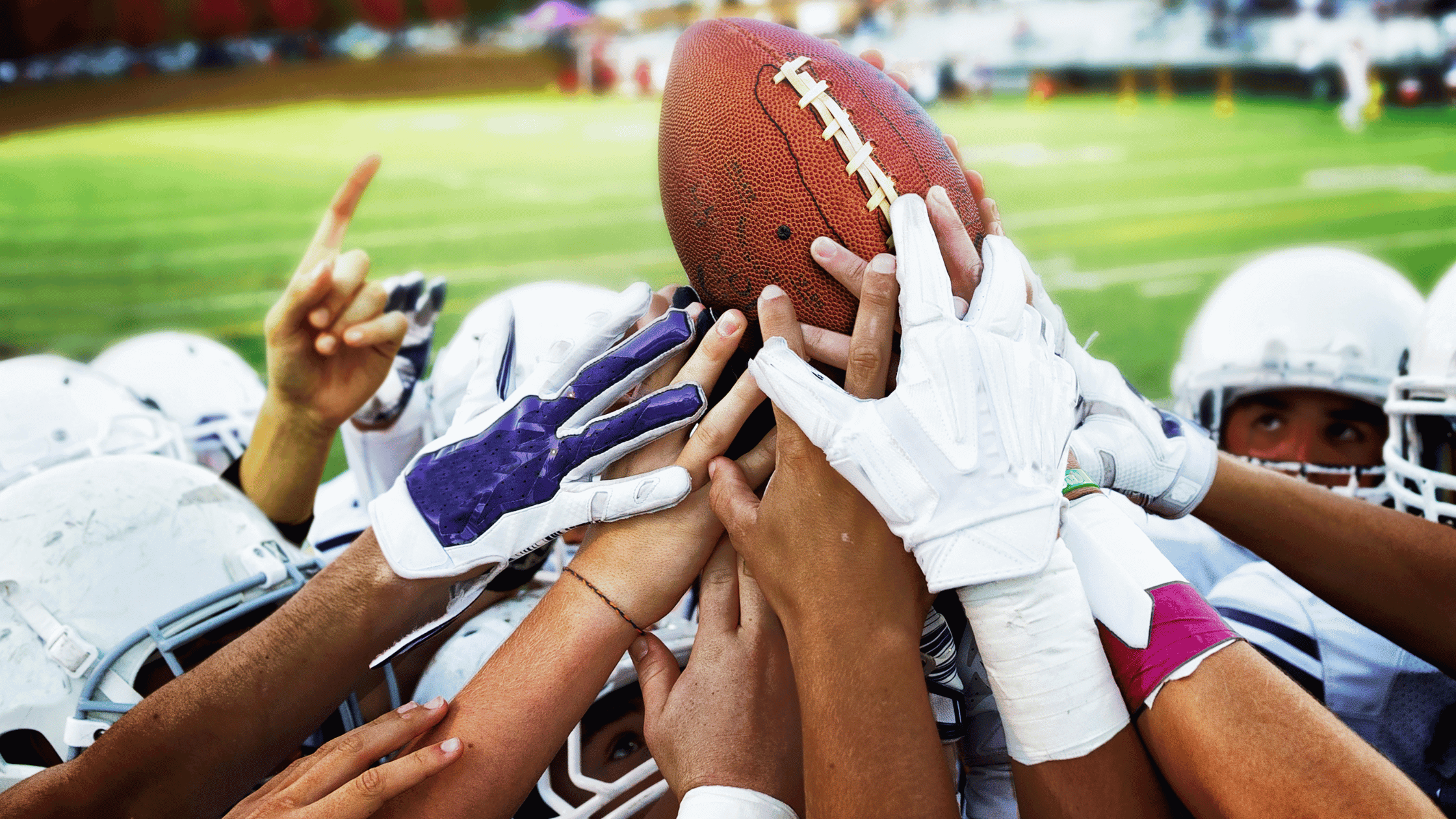The Winning Team: How Physical Therapy Keeps Football Players in the Game

Licensed Physical Therapist, PT, DPT // EW Motion Therapy Homewood
Football is a sport that demands immense physicality and skill. Whether it's a quarterback launching a perfect spiral, a running back breaking tackles, or a defensive lineman sacking the opposing quarterback, the game significantly strains a player's body. As a result, football players are at a high risk of experiencing injuries and discomfort during their careers. A physical therapist can be an excellent resource to help any player get back on the field - we love utilizing sport-specific programming for our football players at EW Motion Therapy. You might decide that our physical therapy doesn’t fit your needs, but you can still read on as we explore football players’ common symptoms and injuries and how physical therapy plays a crucial role in keeping them on the field. We'll also explore how physical therapists collaborate with coaches and athletic trainers to create a winning player health and performance strategy.
Common symptoms and injuries in football players
- Sprains and strains: Football players often experience sprains and strains in various muscle groups and joints. These injuries can result from sudden movements, collisions, or overexertion. Commonly affected areas include the ankles, knees, hamstrings, and quadriceps.
- Concussions: Head injuries, particularly concussions, are a significant concern in football due to the high-impact nature of the sport. Symptoms may include confusion, dizziness, headaches, and memory problems. Immediate evaluation and management are crucial.
- Fractures: Broken bones can occur due to hard tackles or falls. Football players are most susceptible to fractures in the upper extremities, such as the collarbone and wrist, as well as the lower extremities, including the tibia and fibula.
- Dislocations: Joint dislocations, such as a dislocated shoulder, can sideline a player. These injuries often require prompt reduction and rehabilitation to regain function.
- Tendonitis: Overuse injuries like tendonitis can develop over time due to repetitive motions. Players may experience pain and inflammation in areas like the Achilles tendon or rotator cuff.
- Ligament injuries: Anterior cruciate ligament (ACL) tears are relatively common in football. These injuries can be season-ending and require surgery followed by extensive rehabilitation.
- Muscle contusions: Bruised muscles can result from direct blows or collisions with other players. They can cause pain, swelling, and limited range of motion.
The role of physical therapy
Physical therapy is integral to football players’ recovery and performance optimization process. Here's how physical therapists assist in the treatment of common football injuries:
- Pain management: Physical therapists employ various techniques, such as ice, heat, and ultrasound, to manage pain and reduce inflammation. They also use manual therapy to improve joint mobility and alleviate discomfort.
- Strengthening and conditioning: Rehabilitation programs strengthen injured muscles and restore flexibility. Tailored exercises help players regain their strength and functional abilities.
- Balance and proprioception: Football requires excellent balance and body awareness. Physical therapists incorporate balance and proprioception exercises to enhance players' stability and reduce re-injury risk.
- Return-to-play progression: Physical therapists create a gradual return-to-play plan, ensuring players are fully prepared to rejoin the team safely. This includes assessing their readiness through functional tests and monitoring their progress.
- Preventive strategies: Physical therapists work with players to develop personalized injury prevention programs. These programs may include exercises to improve posture, flexibility, and biomechanics to reduce the risk of future injuries.
Collaboration with coaches and athletic trainers
The success of a football player's rehabilitation and injury prevention program is greatly enhanced by the collaboration between physical therapists, coaches, and athletic trainers. Here's how these professionals work together:
- Injury assessment: When a player gets injured, the athletic trainer is typically the first to assess the situation on the field. They communicate with the coach and, if necessary, recommend that the player undergo a thorough evaluation by a physical therapist.
- Communication: Physical therapists maintain open lines of communication with coaches and athletic trainers. They share their findings, progress reports, and training or practice routine modification recommendations.
- Individualized plans: Coaches and physical therapists collaborate to create individualized plans for players' rehabilitation and conditioning. Coaches understand the player's role on the team and can provide input on specific performance goals.
- Monitoring progress: Athletic trainers and coaches closely monitor the player's progress during rehabilitation and conditioning. They ensure that the player follows the prescribed plan and provide guidance on when it's safe to return to full practice and game participation.
- Injury prevention strategies: Coaches and physical therapists collaborate on injury prevention strategies, integrating them into the team's overall training regimen. This proactive approach helps reduce the risk of injuries during the season.
- Performance enhancement: Physical therapists can also enhance a player's performance by addressing biomechanical issues or muscle imbalances that may hinder their abilities on the field. This proactive approach can improve a player's overall performance and reduce the risk of injury.
Football is a physically demanding sport that exposes players to various injuries. However, with the support of dedicated physical therapists, coaches, and athletic trainers, players can recover from injuries and maintain peak performance. The collaborative efforts of these professionals ensure that football players receive comprehensive care, from injury assessment to rehabilitation and injury prevention. As a result, players can continue to thrill fans with their incredible athleticism and contribute to their teams' success while staying healthy and competitive throughout their careers. Football truly is a team sport, not just on the field but also in the training room, where the collaboration between experts keeps players in the game and on the path to victory. We love working with football players at EW Motion Therapy to keep them playing at their best all season. If you’re curious about what else physical therapy can do for you, click the button below to download our answers to 20 frequently asked questions.
.png)

